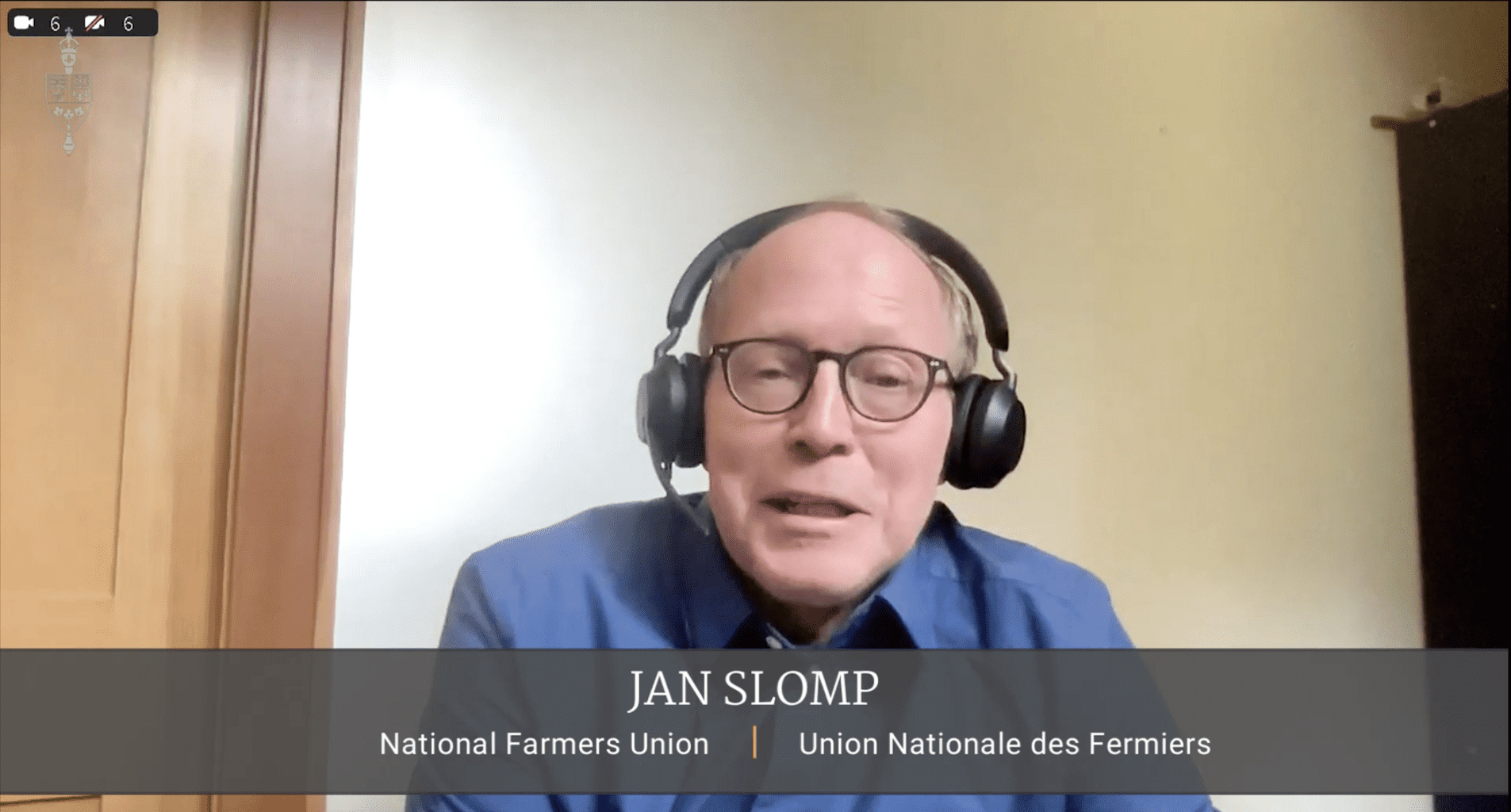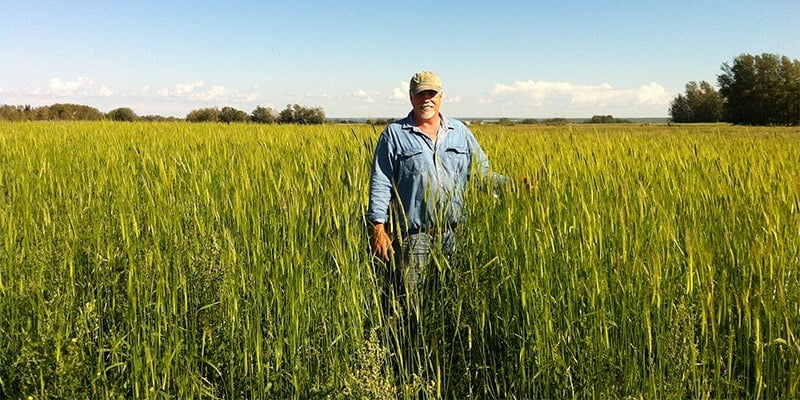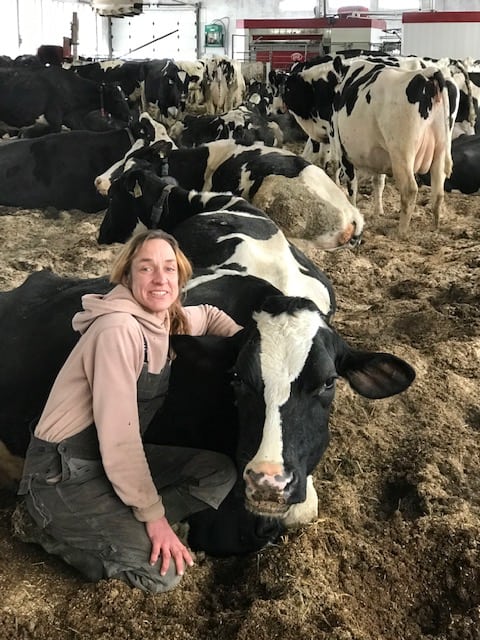
Supply Management
The National Farmers Union strongly supports Canada’s supply management system as an important institution of food sovereignty. Supply management is a unique Canadian institution that helps us avoid wide fluctuations in supply and prices, without requiring massive government subsidies to support farmers’ incomes in these sectors.
Supply management is a unique Canadian institution that provides stability in five perishable food sectors by controlling the amount produced, preventing shortages, and keeping under-priced imports from being dumped into our market. As a result, Canada does not experience wide fluctuations in supply and prices and our system does not require massive government subsidies that are used by other countries to support farmers’ incomes in these sectors.
Canada’s supply management system applies to dairy, broiler chickens, laying hens, turkeys and hatching eggs across Canada. Each commodity is governed by its own elected provincial marketing board according to provincial legislation and regulations. The diversity among the boards and their autonomy allows for variations in how supply management is implemented within the national framework.
Supply management was designed in Canada to solve multiple problems. Farmers with perishable products such as milk were at the mercy of processors who knew they could pressure farmers into accepting lower prices because the alternative was a spoiled product worth nothing. If individual farmers each tried to compensate for low prices by producing more, the result was a market glut which further depressed prices. Often the solution was to dump the excess milk, wasting it. Processors could threaten to refuse delivery and lower prices by encouraging competition among producers, allowing the price to be set by the most desperate farmer. Consumers were subject to price volatility, erratic supplies and seasonal shortages. Furthermore, it was difficult to ensure consistent quality when farmers could not rely on a fair return for their efforts and investment.
Supply management is an innovative solution, developed for dairy in Ontario and Quebec in the 1960s when dairy farmers organized and took political action to address the problems that led to both milk shortages and over-production and waste, along with volatile incomes. Milk prices fluctuated seasonally and were often below the cost of production — and at times, processors would turn farmers away. Elsewhere in Canada, fresh milk supply was inconsistent, sometimes with no milk available at all. In 1969, in exchange for a commitment by all dairy farmers to apply production discipline, the governments of Ontario and Quebec implemented supply management regulation for dairy. Other provinces soon followed.
The supply management system in chicken and eggs was initiated in British Columbia in 1961 due to similar problems resulting in unacceptable price volatility. Ontario and Quebec, then Saskatchewan and Nova Scotia followed with provincial programs. However, imports from the US and non-participating provinces undercut prices and weakened these new systems. In 1971 the federal government passed the Farm Products Marketing Agencies Act which brought all provinces into the system, and in 1979 import controls were established. Starting in 1973, supply management for turkeys followed in the footsteps of dairy, chicken and eggs.
The supply management system stands upon three pillars and requires all of them to function together:
- Production discipline – ensures farmers produce no more or less than the market needs;
- Cost-of-production pricing – ensures that farmers receive a fair income; and
- Import controls – provide for predictable and adequate supply.
Production discipline is accomplished through the use of quota – which both allows and requires the farmer to produce a specific volume of the product. The total supply needed for each commodity is determined annually based on the previous year’s consumption trends, and a share of total quota is allocated to each provincial marketing board for distribution to individual farmers. Each marketing board also decides upon quota exemptions and minimum quota amounts for its own province.
Cost of production pricing is accomplished by applying a formula to set the minimum price processors must pay to farmers to cover the cost of running an efficient operation. The cost of production pricing mechanism only applies to farm-gate pricing – not grocery store prices.
Import control is accomplished by using “Tariff Rate Quotas” (TRQs) that allow a limited amount of imports to Canada at low or zero tariff rates, but above the TRQ threshold, very high tariffs are applied, making further imports uneconomic. The World Trade Organization rules allow countries to restrict or prohibit imports of a product if they do so to enforce government restrictions on the domestic production of the same or similar product.
Dairy in a global context
Dairy products are produced and consumed all around the world. Most countries produce primarily for own populations; there are only five major dairy exporters: The EU, USA, New Zealand, Australia and Argentina. In many countries in the global South, most dairy products are produced by small farmers and distributed through informal markets organized at the local level. See GRAIN’s The Great Milk Robbery for more information.
Supply management is a target in trade agreement negotiations. Trade agreements such as CETA and the CPTPP have weakened the import control pillar by giving exporting countries increased access to our market and reducing the volume our farmers will be able to produce and sell. In NAFTA renegotiations, the USA is seeking to dismantle our supply management system altogether. With trade agreements that give away part or all of our own market, Canada will have fewer farmers and less of Canadians’ food dollars will stay at home to support our local and regional economies.
Paradoxically, NAFTA, CETA and CPTTP’s spotlight on Canada’s supply management system has raised international awareness about its benefits. Farmers in the USA and Europe are now calling on their countries to adopt our system.
Domestic challenges. There is a growing movement of small-scale farmers in Canada developing niche markets and focusing on direct sales to local consumers. By eliminating the middlemen, these farmers obtain a larger share of the value of their products. Differentiating their products and building a loyal customer base provides a degree of economic stability. In some cases they would like to enter, or expand milk, poultry or egg production to add diversity to their mixed farms and better serve their customers, but are unable to do so, or lose money if they do, as a result of minimum quota regulations and/or low quota exemption thresholds in their province. The NFU believes that the supply management system is capable of responding to these farmers’ aspirations in a constructive manner that will enhance Canada’s food system.
The National Farmers Union strongly supports Canada’s supply management system as an important institution of food sovereignty. To keep supply management strong for the future, the NFU would like to see federal and provincial governments, marketing boards and their associations to:
- Uphold and defend the three pillars of supply management: production discipline, cost of production pricing and import controls.
- Move forward with policies that advance the decapitalization of quota in the interests of the supply-managed sectors’ next generation of farmers.
- Implement policies to allocate new quota due to growing markets, as well as quota released by retiring farmers, to new entrants and alternative production systems in order to promote renewal, resilience and response to consumer desires for diversity.
- Consider creating a role within the governance structures of provincial marketing boards for registered and/or licensed non-quota direct-marketing producers and/or multi-stakeholder public interest advisory bodies.
- Open discussions with federal and provincial health authorities regarding sale of unpasteurized milk for human consumption as a first step towards assessing opportunities for innovation in response to the market segment seeking raw milk.
- Develop a “triple bottom line” approach to cost of production pricing formulae to ensure environmental and social costs are not externalized.
Recent Developments in the Supply Management Campaign
Articles
- Cross Border Connections on Dairy Policy (PDF)
- What does NAFTA actually say about Supply Management? (PDF)
- TPP Signed, Consultations underway (PDF)
- TPP attack on Supply Management: a beggar thy neighbour strategy (PDF)
Reports
- Strengthening Supply Management – Defending Canadian control of our market space and advancing food sovereignty
- Strengthening Supply Management – Newsletter article (PDF)
- Protocol for Legal Sale of Fresh Unpasteurized Milk within the Supply Management System
- Are Canadian Consumers and Farmers Better Off with the Canadian Model? (PDF) by Export Action Global






